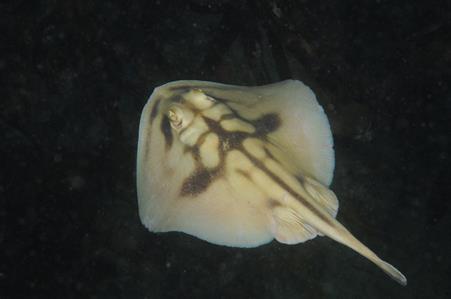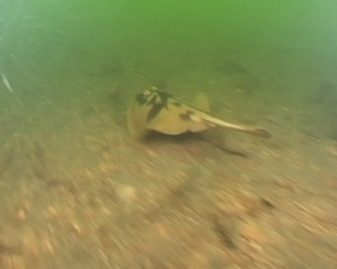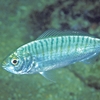General Description
Disc smooth, almost circular to oval, slightly wider than long, with a widely triangular fleshy snout; tail short; caudal fin short; dorsal fin absent. Upper surface grey to yellowish-brown with an intricate pattern of dark bars, stripes and blotches; a dark stripe along middle of disc to serrated spine on tail; mMouth on the underside with many small teeth. Underside pale. To 50 cm.
Biology
A sedentary species, the Banded Stingaree feeds mostly on crustaceans and polychaete worms. Females give birth to live young. They are often seen by divers and taken as bycatch in commercial trawls. They must be handled with great care as the serrated spine is venomous and can inflict a very painful wound.
Habitat
Shallow coastal waters, often on muddy or sandy bottoms near the entrance to bays and estuaries, in depths to 210 m.
Soft substrates
Distribution guide
South-eastern Australia.
Species Group
Sharks and rays › Stingrays, stingarees and allies
Depth
Shallow (1-30 m)
Deep ( > 30 m)
Water Column
Max Size
50 cm
Diet
Carnivore
Harmful
The venomous barb on the tail can cause a painful injury.
Commercial Species
No
Global Dispersal
Native to Australia
Conservation Status
- DSE Advisory List : Not listed
- EPBC Act 1999 : Not listed
- IUCN Red List : Not listed







